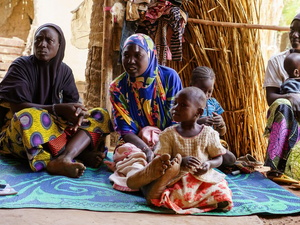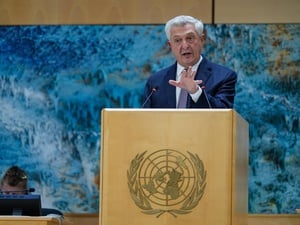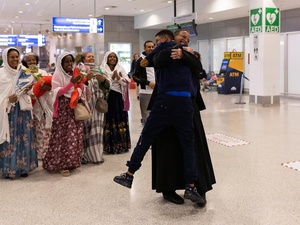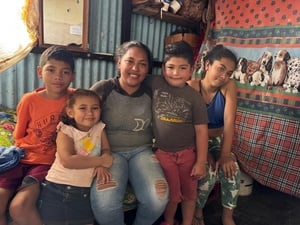Asylum in the UK
Asylum in the UK
What are refugees?
A refugee is a person who:
'owing to a well-founded fear of being persecuted for reasons of race, religion, nationality, membership of a particular social group, or political opinion, is outside the country of his nationality, and is unable to or, owing to such fear, is unwilling to avail himself of the protection of that country'
Article 1,1951 Convention Relating to the Status of Refugees

maryam8
Does the UK have more asylum-seekers than most countries?
No, it does not. In the year ending September 2022, the UK received 72,027 asylum applications from main applicants only. This is double the number of applications in 2019. This is likely linked in part to the easing of global travel restrictions that were in place due to the COVID-19 pandemic, and to a sharp increase in small boat arrivals to the UK, of which almost all claim asylum.
Albania was the top nationality claiming asylum in the UK in the year ending September 2022 (13,650 applications).
In the year ending September 2021, EU+ (EU, EEA and Switzerland) countries have seen a 4% fall in asylum applications, receiving 418,495 first time asylum applications from non-EU citizens. The top nationalities of people applying for asylum were Syrian (75,615), Afghan (49,905), Venezuelan (19,235), Colombian (18,160), Pakistani (17,960), Iraqi (16,420), and Turkish (13,845).
In the year ending September 2021, Germany received the highest number of asylum applicants (127,730) in the EU+, followed by France (96,510). When compared with the EU+ for the same period, the UK received the 4th largest number of applicants (44, 190 – including main applicants and dependents). This equates to 8% of the total asylum applicants across the EU+ and UK combined over that period, or the 18th largest intake when measured per head of population.
Germany, France, Spain and Italy accounted for around 70% of all first-time applicants in the EU-27. These figures include all asylum applicants, not just main applicants (i.e. including children and other dependents). World-wide around 85% of all refugees live in developing regions , not in wealthy industrialised countries, and 73% of refugees displaced abroad live in countries neighbouring their countries of origin.
(Source: Home Office, EuroStat)
How many refugees are there in the UK?
According to UNHCR statistics, as of November 2022 there were 231,597 refugees, 127,421 pending asylum cases and 5,483 stateless persons in the UK. The war in Ukraine drove a large increase from the previous year.
The vast majority of refugees globally – 4 out of 5 – stay in their region of displacement, and consequently are hosted by developing countries. Turkey now hosts the highest number of refugees with 3.7 million, followed by Colombia with 1.7 million.
(Source: UNHCR Data Finder)
Where do asylum-seekers in the UK come from?
Amongst adults, Albania was the top nationality claiming asylum in the UK in the year ending September 2022 with 13,650 asylum claims. Iran is now second, after being the first every year since 2016.
In the year ending September 2021, the top five countries of nationality for asylum applications (from main applicants) were: Albania (13,650), Iran (9,652), Afghanistan (6,644) Iraq (6,333) and Syria (4,143).
What is a bogus asylum-seeker?
There is no such thing as a bogus asylum-seeker or an illegal asylum-seeker. As an asylum-seeker, a person has entered into a legal process of refugee status determination. Everybody has a right to seek asylum in another country. People who don't qualify for protection as refugees will not receive refugee status and may be deported, but just because someone doesn't receive refugee status doesn't mean they are a bogus asylum-seeker.
Let us remember that a bogus asylum-seeker is not equivalent to a criminal; and that an unsuccessful asylum application is not equivalent to a bogus one - Kofi Annan
What benefits do asylum-seekers receive in the UK?
The majority of asylum-seekers do not have the right to work in the United Kingdom and so must rely on state support.
Housing is provided, but asylum-seekers cannot choose where it is, and it is often ‘hard to let’ properties which Council tenants do not want to live in.
Cash support is available, and is currently set at £40.85 per person, per week, which makes it £5.84 a day for food, sanitation and clothing.
(Source: Home Office)
How many refugees have been resettled to the UK?
Resettlement is the transfer of refugees from a country where they have initially sought asylum - often in the same region as their country of origin - to a third state which has agreed to admit them. It is a life-changing durable solution for refugees whose life, liberty, health, or human rights are at risk in their country of refuge, or for whom relocating to another country is their only hope of being reunited with their family.
Refugees can be resettled to the UK via the Mandate Scheme, the UK Resettlement Scheme (UKRS) Community Sponsorship Scheme and the Afghan Citizens Resettlement Scheme (ACRS).
1,391 people were granted protection through resettlement schemes in the year ending September 2022. This is 25% of the number of people resettled in 2019.
1,101 were resettled through the UK Resettlement scheme (UKRS), 4 arrivals under Pathway 2 of the ACRS, 6 under the Mandate Protection Programme and 280 under the Community Sponsorship Programme. (The Home Office does not provide figures for the ARAP and ACRS Pathway 1 and 3)
Find out more about resettlement here.
What is subsidiary or humanitarian protection?
Subsidiary protection can be given to people who do not meet the 1951 Convention’s legal definition of a refugee but are still in need of international protection.
Across the EU, the Qualification Directive provides subsidiary protection for those facing the following threats if returned to their country: (1) the death penalty or execution; (2) torture, inhuman or degrading treatment or punishment; or (3) threats from an international or internal armed conflict.
The UK uses the legal term humanitarian protection to meet this Directive. Applicants can also be given ‘discretionary leave to remain’, a form of temporary permission which is unlikely to be more than three years.
Can refugees reunite with their families in the UK?
Yes. In certain circumstances refugees in the UK are permitted to reunite with family members who are living elsewhere.
In the year ending September 2022 4,786 Family reunion visas were issued to partners and children of those granted asylum or humanitarian protection in the UK. This is 26% lower than the previous year.
However, current rules are restrictive for refugees applying to reunite with family members in the UK. This is due to a narrow definition of who qualifies as a family member, restrictions on refugee children being able to reunite with their parents, and a lack of legal support for refugee family reunion applications.
Find out more about the #FamiliesTogether campaign.
Are there any asylum-seekers or refugees in detention in the UK?
23,226 people entered immigration detention in the year ending September 2022. At the end of September 2022, there were 2,077 people in immigration detention (including those detained under immigration powers in prison), close to three times more than at the end of June 2020 (698) when the impact of the pandemic was most pronounced, and 27% more than pre-pandemic levels at the end of December 2019 (1,637). Of the 2,077 people in detention at the end of September 2022, 1,383 (67%) had claimed asylum (either pre or during detention).









